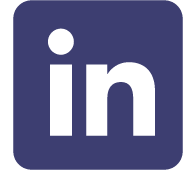Making the right hiring decisions is one of the most critical tasks in leading an organization, and possibly one of the most difficult. Following are ten of the most common hiring mistakes and some suggestions for avoiding them.
Hiring someone just like you. Research has shown that people evaluate others more favorably if they see them as similar to themselves; a hiring manager may feel that they connect better with a candidate who has similar experiences, attitudes, political views, and physical appearance, and that conflict with that individual will be less likely if they are hired. However, these feelings of connection may hide weaknesses in the candidate that would make him or her a poor fit for the job. In the end, it is better for business overall to have a wide variety of perspectives, backgrounds, and skills represented in the workforce, with team members who will challenge each other.
Hiring too fast; trusting first impressions. When leaders wait to hire someone until it’s an emergency, they tend to settle for “good enough,” which can then become the status quo. For the most part, the candidates seen in the first week of interviews will not represent all of the candidates out there. It is important to consider what the “great” candidate would look like and what the long-term fit will be. Another pitfall is relying on “gut feelings” when hiring, rather than objective measures such as testing, simulations, and work samples. According to Newtek Business Services, many candidates are highly skilled at the interview process and can come across as confident, well-informed, and eager to please, but may not really line up with job requirements.
Hiring from the resume. According to Joel Peterson, chairman of JetBlue airlines and lecturer at Stanford Graduate School of Business, a candidate’s resume should serve as an “advertisement” that provides basic information; beyond that, though, the candidate’s “brains and heart” need to be evaluated, as this speaks to his or her ability to confront unexpected challenges, demonstrate wisdom and judgment, and develop into an invaluable team member. Peterson describes “brains” as a flexible mindset that combines book smarts and street smarts, helping to navigate unfamiliar situations and make sense of many conflicting signals, and “heart” as the candidate’s system of ethics and beliefs from which all of his or her choices and actions arise. Although it is important to hire someone with the appropriate skills for the job, it is equally important to find someone who will fit with the organization’s culture and values. “Hire for fit and train for skill,” advises Roberta Chinsky Matuson, of Monster.com.
Not maximizing the interview. The interview is really a fact-finding investigation that requires coordination, planning, and time. Without a strategy for the interview, questions will be predictable and answers will be vague, redundant, and unenlightening. The interview process should include all future team members; extra eyes and ears may pick up on subtleties that one person alone would miss, others may have a better understanding of the technical strengths needed for the position, and this sets up the new hire for a better opportunity to find mentors and collaborators. Including the team also serves as a morale-booster, as it indicates to team members that the leader has confidence in their opinions. The interview team should allow the interview to run as long as necessary to get the depth necessary, carefully listen to candidates’ questions, and gather together immediately following the interview to compare insights while they’re fresh. According to Lee Colan, founder of the L Group, an interviewer should spend 80% of the interview listening and only 20% talking; more talking than this indicates a focus on “selling the job instead of screening the candidate,” and can signal poor interview preparation to the candidate. In addition, it is important to not settle for vague or general responses; ask follow-up questions, probing for detailed examples of the candidate’s demonstrated success in the sought-after areas.
Lazy reference-checking. Reference calls are more important than a simple “check-the-box” hiring chore, and should be completed by leaders themselves, rather than delegated to HR or to an assistant. Some suggestions from Peterson: include both standard and open-ended questions; remember that the primary references were provided by the candidate and will more than likely give a positive review; request additional references from the primary references to gain further insight; ask candidates beforehand what they think their former boss will say about them, and then compare their answers to the boss’s actual answers; try not to make the call sound like a fishing expedition for problems (i.e. be tactful); be alert to “warning signs” such as faint praise or reluctance to provide information; make the conversation as natural as possible. Heidi Ganahl, CEO of Camp Bow Wow, suggests that starting a new hire out as a consultant to give them time to prove themselves offers another layer of security.
Poor onboarding. A well thought-out onboarding plan, as well as clear expectations and feedback, is necessary. The first 90 days are critical in providing support, direction, and encouragement to a new hire; this should be the job of the leader and include mutually beneficial goals. Make sure to get the whole team involved in the process. Let the new hire ease in, spending his or her first few months listening, observing, getting to know teammates, and building trust. Provide frank, real-time feedback, and accept the same in return. Coach the new hire that the “how” of their job can be more important than the “what.” Demonstrate the values of the organization, rather than just presenting them in writing.
Not looking inside/not looking outside. The benefit of an outside hire is the new skills, experience, and ideas they may bring to the table that are not already present on the existing team, which can help the whole culture to evolve. However, the appeal of the unknown can also be its drawback – it’s not possible to know every possible problem with a new hire before they are hired. On the other hand, when promoting internal candidates, their character and capabilities are already known, and internal promotions help demonstrate a positive culture of professional development. The drawback to this, though, is the possibility of making the organization stagnant and less innovative. It’s important, therefore, to have a good balance and look for candidates both within and outside of the organization.
Making it all about the money. Peterson suggests that the hiring goal of any organization should be to make it “all-volunteer” – employees should want to be there. Oftentimes, he writes, companies focus on attracting candidates simply through a paycheck, but employees who choose jobs based on the highest salary are often unhappy. He suggests considering other forms of “compensation” to offer meaning, recognition, and respect to employees, such as: access to senior management and the knowledge that their voices are heard; egalitarian job titles; credit given for great performance; providing opportunities for professional growth; and an opportunity to engage in community service that is meaningful to them. This ensures that leaders are not staffing their companies with “hired guns” who will leave when an opportunity with better pay arises.
Dragging out the misery when someone doesn’t work out. Peterson estimates that about a third of new hires don’t work out, and that this will usually be apparent within the first 90 days of the employee’s tenure. Most of the time, it won’t be blatant poor work product, but simply a lack of fit with the team. Dragging out the decision to let this person go will only make the problem worse. When severing the relationship, some key points to remember: take the responsibility for the poor fit, rather than blaming the hire; be understanding about the emotional effect the firing will have on the hire (be gracious and gentle); in whatever way possible, help the hire find a new job, provide a reference, or brainstorm, as well as provide severance pay; represent the reason for the change to your organization in a kind but true manner; provide constructive feedback to help the individual succeed in his or her next position, as well as soliciting feedback about opportunities they saw for improvement in the company.
Not having a clear hiring policy in place. It is important to have a clear-cut, efficient hiring policy in place, both to avoid confusion and to prevent legal issues. This includes a clearly-written, precise job description; an organized plan for seeking candidates (e.g. posting on job boards, seeking referrals from colleagues, and attending industry-related networking events); performing phone interviews first; and preparing a list of set questions to ask candidates in the on-site interview to be able to compare them objectively. The specific skills, abilities, knowledge, experience, and personal attributes that are needed for the position should be well thought-out before beginning the process. Burton Goldfield, president and CEO of TriNet, suggests creating a “hiring scorecard” to use in interviews that includes these factors, which will help prevent the hiring process from becoming too emotional. In addition, hiring managers should be trained to be legally compliant in their questions, to avoid the possibility of cries of discrimination.
Most importantly, keep in mind that there is no such thing as a “perfect” candidate. The longer you spend looking for one, the more likely you are to overlook the great candidates right in front of you.


